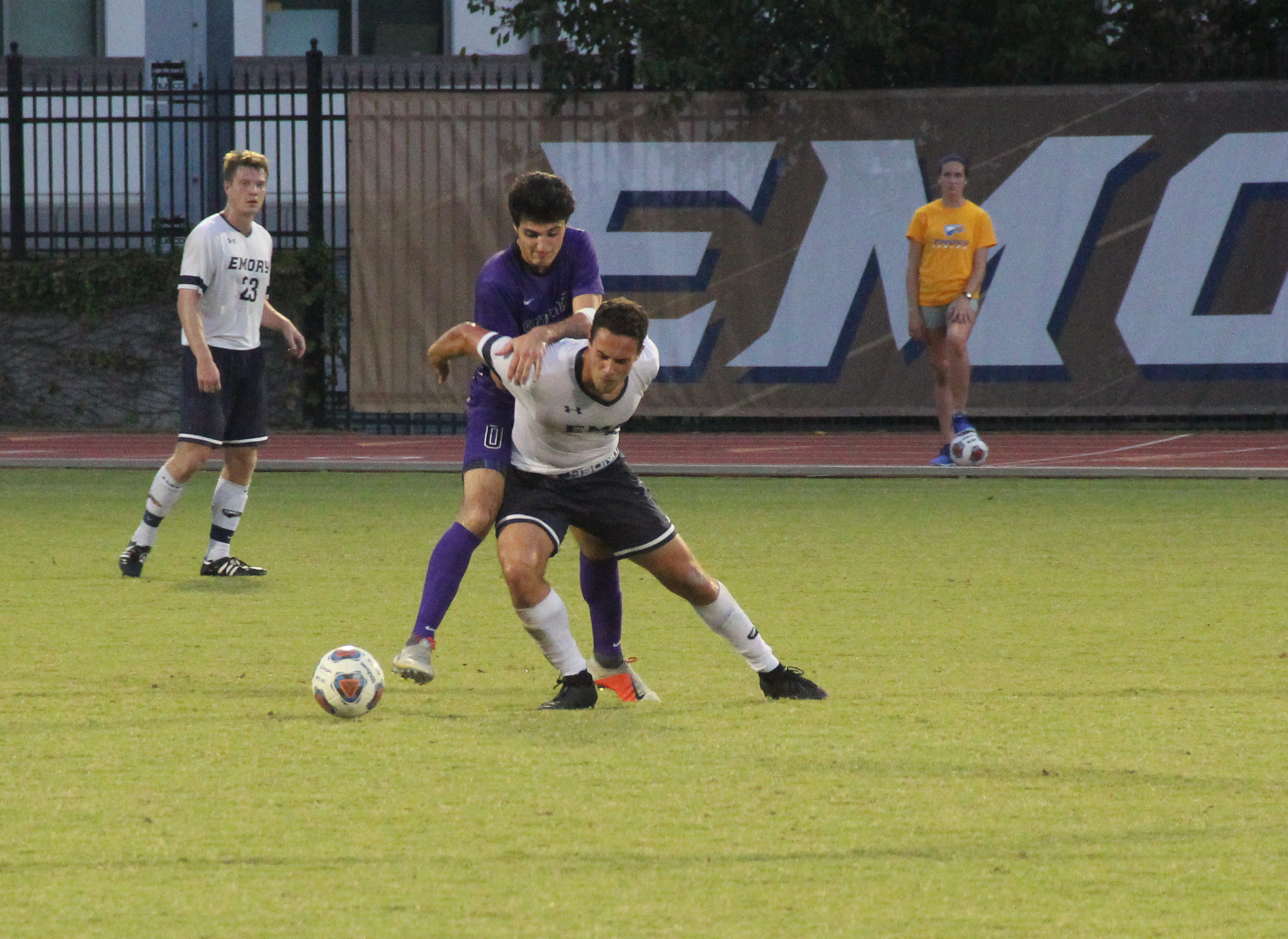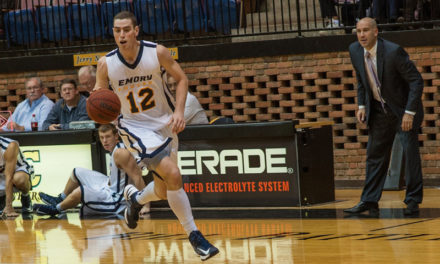New Orleans Saints quarterback Drew Brees announced his retirement from football in a March 14 Instagram post. While there were already rumors circulating that Brees would not return for another season, the future first-ballot Hall of Famer made it official exactly 15 years after he first signed with the Saints.
View this post on Instagram
As someone who was born in New Orleans and has been a die-hard Saints fan since I could understand what football was, I can attest that everything Brees stated in his retirement post is completely true. Brees noted how he “poured [his] heart & soul into being [the Saints’] Quarterback” and persevered through injuries, especially late in his career. He also brought unprecedented success to a fanbase so deprived of winning, including leading the team to four straight division titles in the last four years. Any account I give detailing Brees’ importance to New Orleans will not do justice conveying his immeasurable impact. To understand Brees’ relationship with the city of New Orleans, it is important to begin when he first entered the league 20 years ago.
Brees’ legendary career began with the San Diego Chargers, who drafted him in the second round of the 2001 NFL Draft. However, in his fifth year with the team, Brees suffered a gruesome hit that dislocated his throwing shoulder through the bottom of the joint, completely tearing his labrum and partially tearing his rotator cuff. Doctors were uncertain of whether Brees would ever be able to play again. On top of the injury, Brees was vying for a brand new contract as his deal was set to expire at the end of the 2005 season. Even though Brees had already proven that he could play at a high level, teams were reluctant to sign a quarterback coming off of a catastrophic injury.
As I reflect on Brees’ record-breaking career with the Saints, it is clear that he was a perfect fit with the team and city. Season after season, Brees orchestrated the offense like a conductor leading a world-class symphony, employing every player who stepped on the field. Whether someone was a star receiver or a backup running back, there was a good chance Brees would get them the ball. Throughout Brees’ tenure, the Saints showcased one of the greatest offensive dynasties the NFL has ever seen. The same year Brees suffered his injury, however, the city of New Orleans faced overwhelming adversity.
When Hurricane Katrina moved through New Orleans in 2005, destroying homes and buildings and leaving towns submerged underwater, the Saints were unable to play any games in their home stadium for the entire season. Instead, the team split playing their home games between the Alamodome in San Antonio and Tiger Stadium, home of the Louisiana State University football team.
At the end of a dismal season, in which they went 3-13, the Saints replaced head coach Jim Haslett with Dallas Cowboys assistant head coach Sean Payton. When Payton assumed the role, his Saints and the Miami Dolphins were the only two teams pursuing Brees. The Dolphins, who were coming off of a 9-7 season, offered a more stable and successful destination but the Saints provided a new beginning for both Brees and the team.
When Brees visited New Orleans, the Saints toured him around the city but attempted to shield him from areas most devastated by Hurricane Katrina. However, when Brees’ driver made a wrong turn into an area greatly destroyed, Brees witnessed the true wreckage left in Katrina’s wake. For some, this may have been one reason for Brees not to sign with New Orleans. But, for Brees and his wife Brittany, it was the reason to sign.
“As those few days went by,” Brittany said in a 2010 interview with Sports Illustrated, “Drew and I felt that maybe we were being called to New Orleans for a reason.”
After the Saints signed Brees, they immediately transformed from a losing team to a playoff contender. In 2006, Brees catapulted the Saints to the league’s No. 5 team offense and the No. 1 passing offense, leading them to an NFC South title and their first playoff appearance in six years. The games I attended in the Mercedes-Benz Superdome were like going to a party, except the festivities were not just limited to fans in the bleachers. When Brees led the charge, everybody joined in the fun. By giving the people of New Orleans something to cheer for, even if only for a few hours per week, Brees helped tremendously in the emotional recovery of a city still reeling from Hurricane Katrina.
Off the field, Brees donated $2 million through his Brees Dream Foundation to rebuild schools, parks, playgrounds, athletic fields and mentoring programs that were destroyed by the hurricane. To date, the foundation has made substantial donations to cancer and ALS research. His philanthropy didn’t stop with Katrina, either: last March, Brees pledged $5 million to Louisiana for COVID-19 relief.
Although nearly twelve years ago, I distinctly remember the range of emotions I felt on Feb. 7, 2010 — the night the Saints faced the Indianapolis Colts in Super Bowl XLIV. I remember feeling intense anxiety throughout the game. I remember watching it with close family friends whose kids obnoxiously cheered against the Saints. But most of all, I remember the overwhelming elation when the game clock hit zero and the Saints defeated the Colts 31-17.
While all cities claim to have emotional ties to their sports teams, the relationship is different in New Orleans. When the city needed a cause to rally behind, the Saints became just that. Driving around town, you would be hard pressed to find a yard or car not donning the Saints’ fleur-de-lis. When the Saints won the Super Bowl, the front page of the Times-Picayune newspaper featured an iconic photo of Brees with the headline “Amen,” a photo my grandparents from New Orleans have framed.
While winning a championship is a team effort, it is safe to say that had the Saints not signed Brees, they would never have even been in a position to win a Super Bowl. Brees led the league in passing touchdowns and completion percentage that season, and he also won MVP of the Super Bowl. Although Brees had a stellar 2009 season, his consistency throughout his career made him elite. Brees leaves the NFL with the most career passing yards, completions and consecutive games with a touchdown pass, and he is second in touchdown passes and career completion percentage.
From being overlooked in the draft to a doubtful return from a gruesome injury, Brees always overcame insurmountable odds. When Brees needed someone to believe in him, the Saints provided unwavering confidence. And when the city of New Orleans needed someone to answer its prayers, Brees answered the call.
Despite the fact that he is walking away from football, Brees made clear that he is not leaving New Orleans.
“I am only retiring from playing football,” Brees said in the retirement post. “I am not retiring from New Orleans. This is not goodbye, rather a new beginning. Now my real life‘s work begins!”

Former New Orleans Saints quarterback Drew Brees prepares to pass in a game against the Seattle Seahawks in 2011. Ten years later, Brees announced his retirement from the NFL after a Hall of Fame career. (Wikimedia Commons/Kelly Bailey)
Andrew Feld (23C) is from Marietta, Georgia, completing a joint major in human health and economics along with a minor in Earth and atmospheric science. He is a former Emory Baseball player, and in addition to writing for the Wheel, he is a Vice President of the Talks branch in TableTalk. If he’s not working out or playing basketball, Feld is likely watching his longtime favorite New Orleans Saints suffer another playoff heartbreak.





